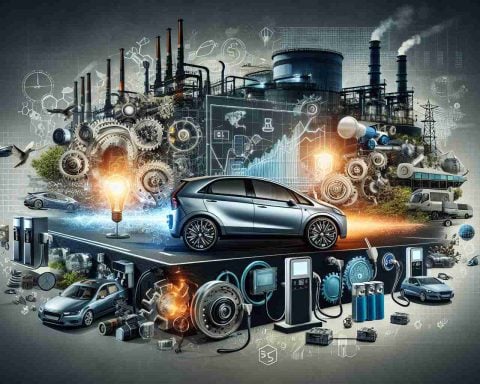- Manufacturing EVs can result in higher carbon emissions compared to traditional cars.
- Essential minerals for EV batteries often come from regions with poor labor practices, raising ethical concerns.
- Charging infrastructure is underdeveloped in many areas, causing anxiety for potential EV owners.
- Many EVs are charged using electricity derived from fossil fuels, diminishing their environmental benefits.
- Consumers should assess local charging options, total ownership costs, and energy sources before purchasing an EV.
- The path to a sustainable future with electric vehicles is fraught with complexities and challenges.
The dream of a greener future through electric vehicles (EVs) is more complicated than it appears. While the allure of emissions-free driving is undeniable, a closer inspection reveals that the reality may be less than rosy.
Did you know that manufacturing an EV can actually release more carbon into the atmosphere than producing a traditional gasoline-powered car? This surprising fact raises urgent questions about the true ecological benefits of going electric. Even more staggering, the essential minerals needed for EV batteries, like lithium and cobalt, often come from countries with questionable labor practices, creating ethical dilemmas for conscientious consumers.
But that’s not all. The infrastructure to support EV adoption is lagging. While ambitious plans for charging stations have been touted in places like California, the actual implementation has left many potential drivers with nowhere to plug in, fueling anxiety about battery life during commutes.
And there’s the critical issue of energy sources. Many EVs are charged using electricity from fossil fuels, such as coal and natural gas, rather than clean, renewable sources. This undermines the narrative that EVs are the silver bullet for climate change.
As you consider purchasing an electric vehicle, keep these insights in mind. Evaluate your local charging infrastructure, understand the total cost of ownership, and stay informed about the energy mix in your area.
Ultimately, while electric vehicles promise a cleaner planet, navigating the path to electrification is filled with challenges. It’s time to question whether this is the sustainable revolution it was promised to be.
Unmasking the Electric Vehicle Boom: Are We Really Going Green?
The Complex Reality of Electric Vehicles (EVs)
The electric vehicle (EV) revolution is often portrayed as a straightforward solution to climate change and urban pollution. However, exploring the intricacies reveals a more convoluted picture that warrants deeper examination.
# Insights into Electric Vehicle Production
– Carbon Footprint: Contrary to popular belief, producing an electric vehicle can result in higher carbon emissions compared to a traditional gasoline car. This is largely due to the energy-intensive processes involved in extracting and processing lithium, cobalt, and nickel required for EV batteries.
– Ethical Sourcing Issues: The mining of essential minerals for EV batteries often occurs in regions with significant labor and environmental concerns. Reports have highlighted practices including child labor and unsafe working conditions, casting a shadow over the ethical implications of EV production.
# Charging Infrastructure and Energy Sources
– Infrastructure Gaps: While initiatives aimed at increasing charging station availability are ongoing, many parts of the world still suffer from inadequate infrastructure. Potential EV owners may find themselves without reliable charging options, stoking range anxiety and limiting the practical use of electric vehicles.
– Energy Mix Challenges: The environmental benefits of EVs can be significantly diminished if they are charged using electricity generated from fossil fuels. For instance, in some regions, the power grid is predominantly fed by coal or natural gas, which complicates the narrative that EVs are a zero-emissions solution.
# Future Outlook: Trends and Innovations
– Technological Innovations: Recent advancements are focused on improving battery technology and charging speeds, making EVs more viable. Solid-state batteries and alternative materials for batteries are being explored, which could potentially reduce carbon footprints and enhance performance.
– Market Growth Predictions: As consumer demand increases, the EV market is projected to grow exponentially. According to recent analyses from reputable market research firms, EV sales could surpass those of traditional vehicles worldwide by the year 2030, provided the challenges outlined above are addressed effectively.
Key Questions About Electric Vehicles
1. What are the true environmental impacts of electric vehicles compared to traditional cars?
– While EVs emit no tailpipe pollutants, studies indicate their manufacturing and energy sourcing can create a larger carbon footprint. Comprehensive lifecycle assessments are essential for an accurate comparison.
2. How does the current charging infrastructure impact EV adoption?
– A substantial gap in charging infrastructure hinders widespread EV adoption. Building an accessible and reliable network of charging stations, especially in urban and rural areas, is critical for consumer confidence.
3. What innovations are on the horizon for the EV market?
– Exciting developments include the emergence of solid-state batteries that promise longer ranges and shorter charging times, along with advances in renewable energy integration for more sustainable charging options.
For additional insights into the evolving world of electric vehicles, visit Edmunds for expert reviews and analyses.



















